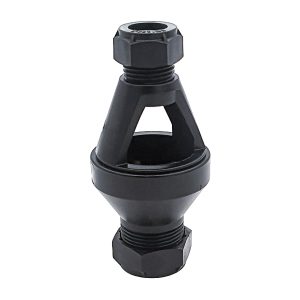- Home
- How to
- How to
- Services
- Services
- Maintenance Plan
- Location
- Guides
- Guides
- No Hot Water – Self help
- Unvented Water Heater
- Unvented Water Heater Faults
- G3 Building Regulations
- Thermal Store Water Heaters
- Thermal Store Faults
- Gledhill ElectraMate
- Gledhill PulsaCoil
- Gledhill Torrent
- Gledhill Stainless Lite
- OSO Unvented Heater
- MegaFlo – Heatrae Sadia
- Santon Premier Plus
- Albion
- Manco Riverstream and Powerstream
- Manco Gladiator & Stirling
- Telford Tempest
- Safety Considerations Unvented Cylinders
- Reduce Your Water Heating Bill
- Range Tribune
- About Us
- About us
- Forum
- Contact

-
Call Now
Specialists in Electric Hot Water Cylinders
Smart Maintenance: How a Simple Tundish Check Can Prevent Major Expenses
Your unvented hot water cylinder has several safety features. One of the most visible (but least understood by UK homeowners) is the tundish. This small fitting sits in the discharge pipework between the cylinder’s safety valves and the drain. Its job? To give you a clear view of whether water is escaping from the system.
It’s a low-tech part, but its job is pretty important. Checking it regularly could save you hundreds, if not thousands, in repair bills.
Why the Tundish Matters
Normally, your tundish should be dry. It only carries water if a pressure relief valve or temperature relief valve has opened to release excess pressure or temperature.
If you see water running or dripping through the tundish when no one’s using hot water, it means the cylinder has released water for a reason and needs attention.
What Your Tundish Might Be Telling You
Why might you see water in the tundish?
1. Pressure Relief Valve Failure
If the valve is faulty or not sealing properly, it can leak constantly into the tundish. If you ignore it, that drip wastes heated water, increases your energy bills, and eventually leads to a complete loss of hot water.
2. Limescale Build-Up
In hard water areas, scale deposits can stop a relief valve from closing fully. This not only causes leaks but can also mask more serious problems, like overheating or building up too much pressure.
3. Overpressure in the System
If the expansion vessel loses its air charge, the natural expansion of heated water has nowhere to go. That extra pressure forces water out through the relief valve, and you’ll see it in the tundish. This can cause repeated heating cycles, wasted energy, and long-term damage to your cylinder.
The Cost of Ignoring the Signs
A steady trickle through the tundish might seem harmless, but over time it can lead to:
-
Higher energy bills from reheating water you’ve lost.
-
Premature wear on valves and internal components.
-
Risk of property damage from leaks if the discharge route becomes blocked or overwhelmed.
-
Expensive emergency repairs if the underlying fault escalates.
How to Check Your Tundish
It’s simple:
-
Locate the tundish near your hot water cylinder.
-
Look for any signs of water flow when no one’s using hot water.
-
If you see a continuous or frequent drip, call a G3-qualified engineer (like EasyFlow).
This is a purely visual check. Never try to dismantle or adjust the system yourself. Only a G3-qualified engineer should be allowed to work on your unvented cylinder.
Prevention Pays
By checking your tundish once a week, you can catch problems before they turn into major repairs. During your annual service, your engineer will also test the relief valves and check for limescale and other problems. Don’t have an annual service contract? Get in touch and we’ll set one up for you.
That single step is one of the cheapest and smartest forms of maintenance you can do, and it could save you from an unexpected cold shower, a hefty repair bill, or even water damage to your home.
Iain, Nantwich
13 October 2025
Annual Service
Excellent service as always.. Highly recommendable.
Peter , Nantwich
16 September 2025
Annual Service
Very pleased with all aspects of the work completed by your knowledgeable staff.
Barry, Royton
13 June 2025
Replacement Valves
Tom, Manchester
20 May 2025
Replacement Valves
Raymond, Lancashire
1 May 2025
Annual Service
Vickie, Didsbury
10 April 2025
Annual Service
Raymond, Reddish
17 March 2025
No Hot Water
Brenda , Liverpool
12 February 2025
Installation
Gianfranco, Uk
18 February 2025
Annual Service
As always the serrvice was done efficiently and the surrounding area left clean and tidy.
Anne, Manchester
30 January 2025
Annual Service

© 2025 EasyFlow Water Limited. All rights reserved








Find out what our clients are saying about the services we provide
Click to view